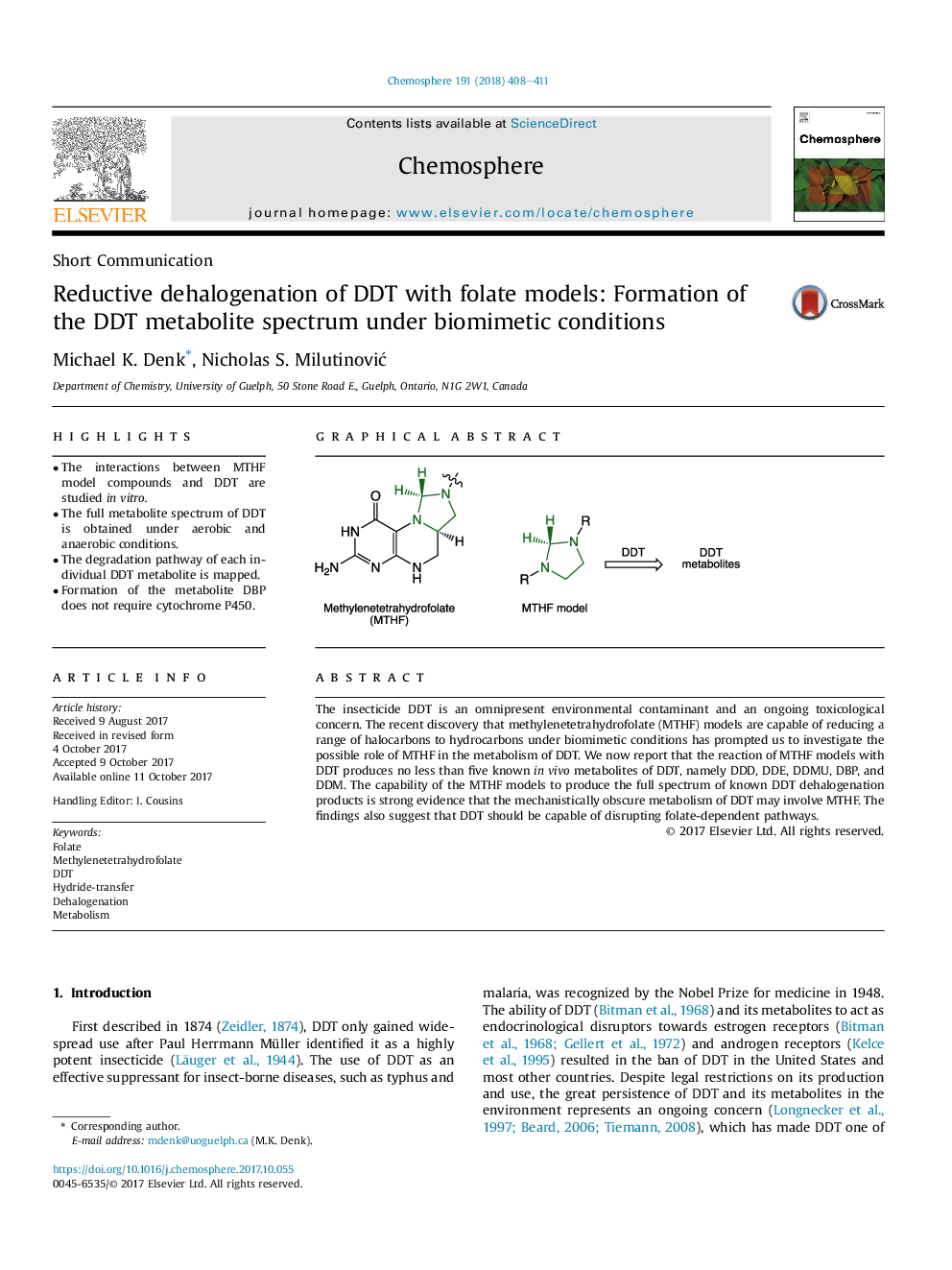| Article ID | Journal | Published Year | Pages | File Type |
|---|---|---|---|---|
| 5745726 | Chemosphere | 2018 | 4 Pages |
â¢The interactions between MTHF model compounds and DDT are studied in vitro.â¢The full metabolite spectrum of DDT is obtained under aerobic and anaerobic conditions.â¢The degradation pathway of each individual DDT metabolite is mapped.â¢Formation of the metabolite DBP does not require cytochrome P450.
The insecticide DDT is an omnipresent environmental contaminant and an ongoing toxicological concern. The recent discovery that methylenetetrahydrofolate (MTHF) models are capable of reducing a range of halocarbons to hydrocarbons under biomimetic conditions has prompted us to investigate the possible role of MTHF in the metabolism of DDT. We now report that the reaction of MTHF models with DDT produces no less than five known in vivo metabolites of DDT, namely DDD, DDE, DDMU, DBP, and DDM. The capability of the MTHF models to produce the full spectrum of known DDT dehalogenation products is strong evidence that the mechanistically obscure metabolism of DDT may involve MTHF. The findings also suggest that DDT should be capable of disrupting folate-dependent pathways.
Graphical abstractDownload high-res image (127KB)Download full-size image
